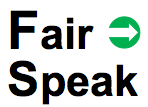The FairSpeak Group
The FairSpeak Group emerged as an interest-driven cross-disciplinary and cross-departmental forum at Copenhagen Business School (CBS) which bridges between the areas of multimodal and transmedial communication, language & cognition, psycholinguistics, visual communication, knowledge management, marketing, consumer law, and graphic design.
In addition to providing research-based idea generation, project management, and consultancy, the group develops new methods to document, explain, and optimize the processes through which manufacturers’ knowledge and intentions can be modelled and communicated in an effective but fair way through words, text, and images – and stand the test of meeting with recipients’ diverse knowledge levels, languages, cultures, and preferences.
The overarching aim is to contribute research-based knowledge to the provision of practical solutions which can support both companies, authorities, and consumers and their organisations.
In today 's increasingly communications-driven societies, things are increasingly becoming what they “say” they are. In a not-too-distant past, we took the time to taste the cheeses at the cheesemonger, scents the steaks at the butcher, and have a chat with both of them about what to choose. Today it is mostly the words, texts, and images on the packaging that tell us what's inside. Likewise, it is no longer only the doctor who needs to understand and choose our medication. It is increasingly bought by ourselves over the counter, and here it is the packaging and the leaflet inside – backed up by the surrounding advertising at the pharmacy, in the media, etc. – that determine what we need to know and not know, and therefore buy and do. Once we relied on experts – our bank advisor, the municipality, the telecom company, etc. – but now we increasingly need to be our own experts to find our way trough a still growing myriad of "packages" covering still more complex services.
The common denominator in all such cases is that compressed information must be decoded under time pressure by recipients with very different prerequisites and goals. Processed well and fairly, it can lower the complexity and help the recipient make the right choice. But the risk of deliberate or unconscious deception is also just around the corner. Distinguishing between spin and fair speak requires knowledge that today’s society does not have at its disposal. A great deal of research and testing have been carried out on the effects of individual communicative tools, but mostly from a marketing point of view – the key question being what sells the product. And when the going gets too rough, politicians, lawyers, and experts can set up certain boundaries through legislation and administrative practices. However, the crux of the matter lies in between these two extremes. What is lacking is an unbiased integrated understanding of the totality of communicative and cognitive mechanisms that come into play when words, text, and images turn into knowledge and preferences in the minds of the recipient – and then into action.
The goal of the goal-driven collaboration between researchers, and between researchers and practitioners, established and further evolving in and around the FairSpeak Group is to create research-based knowledge and impartial recommendations as a basis of action for all relevant actors, thereby facilitating a consensus on how to make the concept of communicative fairness more tangible and measurable in the context of condensed communication under time pressure.
Special Focus Areas
- The interplay between innovative naming, claims, and graphic design.
- Today it is the words, text, and images on the packaging that tell us what is inside.
- The notion of "fairness" needs to be made more tangible and measurable as a basis for evaluating condensed market communication under time pressure.

